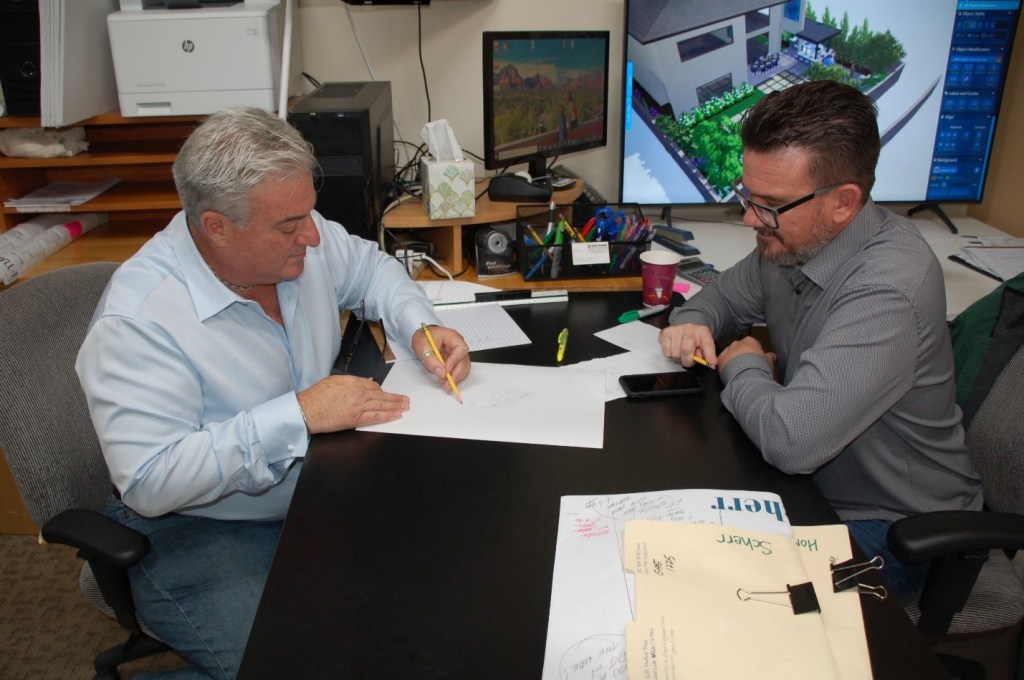My wife says there are two things I need to improve, the first one is that I need to listen better.
I don’t remember what she said the second one was.
Becoming a better listener can help you improve your design skills, customer service, work relations and, yes, even your communication with your significant other. Neuro-Linguistic Programming (NLP) may very well be the key to developing this skill.
Everyone wants to be able to quickly build rapport and “click” with their clients. Learning more about NLP will help you do that and more. As I explained in my previous column, NLP has to do with using your client’s language preference — whether it be visual, auditory or kinesthetic — to communicate more effectively with them. As you hone your NLP and listening skills, you will be able to present concepts that are more in line with your clients’ desires and earn more positive referrals and reviews.
In Part One, we discussed listening to the clients’ words and communicating with them in their preferred language. Communicating with words is only half the story. We all take in a lot of information and decide if we like somebody else, not just by what they say, but also by reading their body language.
In this part, I will discuss laying the groundwork and making a great first impression.
The voice of your business
We begin forming a bond from the very first time the client contacts us.
The first phone communication is critical. It sets the expectation of the client. When I go to a restaurant, it is often the waitperson who is my first point of contact. When they introduce themselves and open up in a friendly and enthusiastic manner, it makes my whole experience better. On the contrary, when they appear rushed or bothered by the added work, it sets a negative tone for the entire experience.
The person who answers your phones has the same impact. For this reason, my staff receives extensive training on phone etiquette.
The “first on phones” person is responsible for speaking to potential clients, answering questions, and writing down pertinent information about them. They must qualify the client without offending them, and do it all in a warm, friendly tone. They convey our excitement at meeting a new client and discussing an opportunity to build something creative and add another beautiful project to our portfolio.
They also need to capture keywords and phrases to help us assess the client’s communication style. The initial phone intake person tries to identify whether the potential client is primarily visual, auditory or kinesthetic by listening to the words they use and how they phrase their questions. On an intake form, the phone screener will write down keywords the client uses. This will help the designer who goes out on the site design consultation to quickly bond with the new client. It can be remarkably effective.
I’ll give you an example. On the initial call, a potential client mentioned her house looked like a “high school yard with nothing but concrete and large block walls.”
One week later I went to the site on a design consultation. I met the homeowner, and she asked me what I thought of her backyard. I said, “Honestly, all these block walls and concrete remind me of my high school yard from years ago.”
The client’s body language lit up. She smiled and said, “I know, right?” We experienced the instant bonding “click” that is the goal of practicing NLP.
The right mindset: Make friends first, sales later
If you are like me, then you enjoy meeting new people and making friends. I tell my sales trainees not to worry about making the sale. Let’s aim to meet some new people and make friends. I challenge them to learn as much as they can about our potential new clients and just be friendly and likable. If the homeowner chooses to hire us, all the better.
Still, there are things we should do to make a good first impression on the design consultation. People hire who they like, and they like people who are perceived to be like them. Nobody wants to work with a sourpuss.
Leave your baggage behind. We don’t always have great days. Sometimes we get stuck in traffic, our kids spilled their breakfast, or maybe our boss yelled at us. Whatever the case, take a moment before you walk up to the homeowner’s door, take a deep breath and think positive thoughts.
In preparation, I also like to stop a few houses down the street, read the intake form, and familiarize myself with the clients’ keywords and verbal cues. Then I approach the home.
First introductions are key to building rapport quickly. Be open, energetic, and stand facing with your heart towards their heart. Shake hands and be the first to announce your name. “Hi! I’m Scott!” with a big smile. When they give you their name, repeat it as you shake hands. This really does help build rapport quickly. After all, isn’t it mostly friends who call us by our first names?
